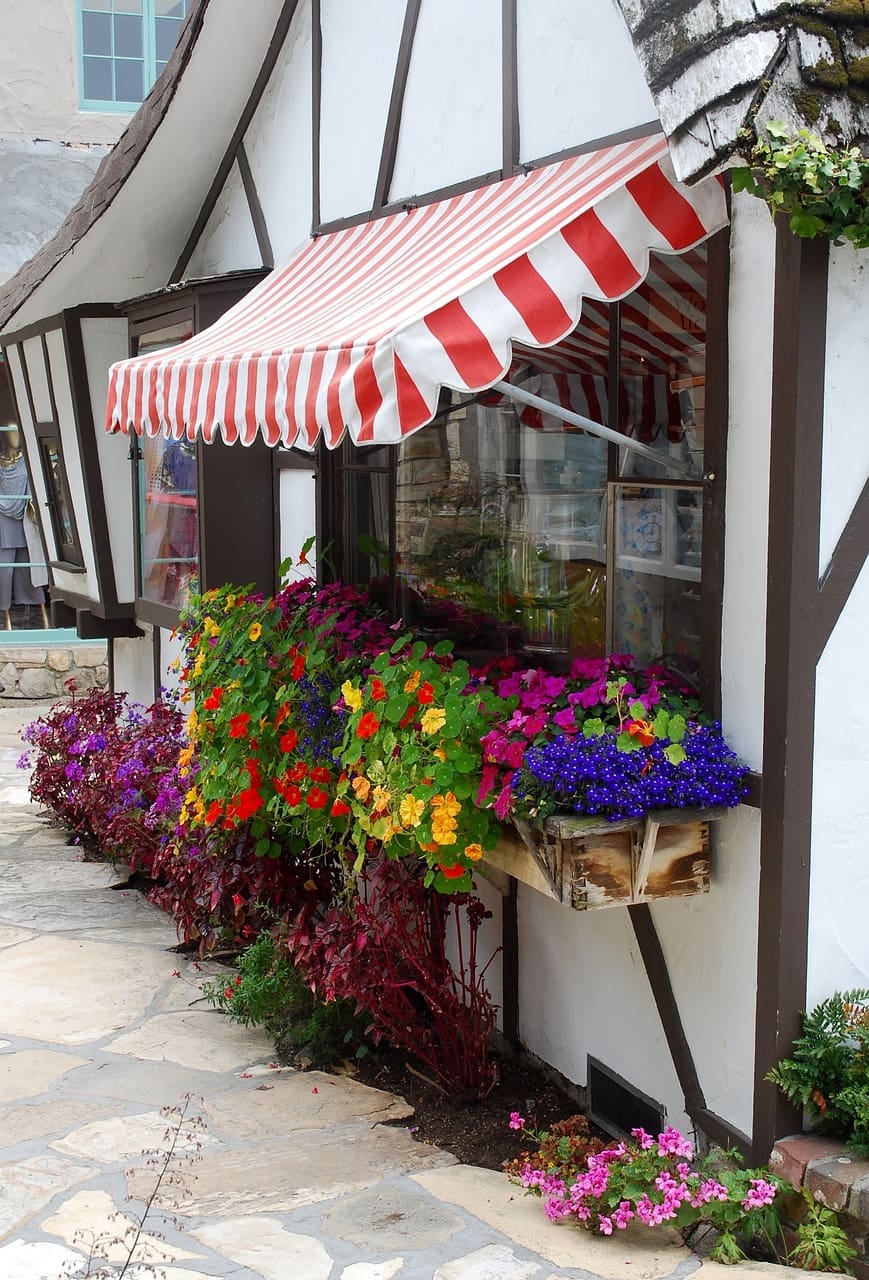A number of infrastructural facilities need protective layers for their maintenance. Awning and Pergola are used as sheds or coverings in different structures in the surroundings to protect them from natural hazards or beautification purposes.
These protective materials are found on houses, gardens, sidewalks, and roadside shops.
Key Takeaways
- An Awning is a retractable fabric or metal cover providing shade and shelter, while a Pergola is a free-standing wooden structure with open sides and a roof.
- Awnings are more suitable for smaller outdoor areas, while Pergolas are ideal for larger spaces such as gardens and parks.
- Awnings are installed above windows, doors, and patios, while Pergolas are used as an outdoor living area or dining space.
Awning vs Pergola
The difference between Awning and Pergola is its use and materials comprised in it. Awning is used specifically as a shed for shops and stalls and is made from acrylic materials that are light and mobile. On the other hand, Pergola is a garden structure used for beautification purposes in recreational areas.

Awning is made from synthetic and light materials such as polyester, acrylic, and vinyl and is later attached to stronger materials such as iron or steel.
They are used on the entrances of residential areas or restaurants. Information can also be printed or painted on the awning.
Pergola is an artificial structure created from plants and creepers, that looks like a frame or entrance in recreational areas or also as a green tunnel. They can also be created with the help of vinyl and fiberglass and other materials to give an artificial green look.
Comparison Table
| Parameters of Comparison | Awning | Pergola |
|---|---|---|
| Definition | Awning is a protective covering or a shed used to protect from harsh winds or sunlight | Pergola is a garden frame or tunnel-like structure that provides shade |
| Wind and Heat Resistance | More resistance to wind and heat | Less resistance to wind and heat |
| Prime Use | Covering or shed on house walls or roofs for restaurants and shops | Temporary shed for decor purposes or beautification |
| Mobility | Can be easily retractable manually or automatically | Cannot be retractable due to being a fixed structure |
| Materials used | Metals, fiberglass, vinyl, acrylic, aluminum, and wood | Timber, PVC, wood, bricks, and stone |
What is Awning?
Awning became a popular practice during the Egyptian civilizations as a method to cover up food stalls and houses. One of the prime benefits of awning is weather control and protection of the area it covers.
There are numerous types of awning based on the material used to make it such as aluminum, acrylic, wood, metal, and fiberglass.
Today, with developments in modern technology, retractable awnings which are adjustable and more convenient to install are also available. It is a temporary substitute for a roof which if built properly can also help in permanent maintenance.
The awning is set up either on the side panels of the house or as roofs. These can be controlled either manually or automatically according to the kind of technology present in the installed awning.
Based on the type of building and its use, different kinds of awning can be developed as per the needs such as retractable, outdoor seatings, storefront, window shades, rolling shutters, louvered roofs, fixed awnings, and much more.
As compared to cement roofs and other sheds, awnings prove to be a much more efficient solution for protection and covering. Information, advertisements, and hoardings can also be printed upon the awnings.

What is Pergola?
Pergolas first came into existence as garden frames and masonry pergolas during the Renaissance period in Italy in the late 16th century.
They began as garden frames and tunnels that helped provide shade to people who walked around in parks or residential grounds. They were built as artificial gardens with the help of creeper plants.
Stones, bricks, and sticks were the prime materials used. In recent years pergolas have taken form on top of verandahs, swimming pool areas, or near the outer portions of the house.
More strong materials such as timber, PVC, bricks are used to make the structure more sturdy.
The prime objective of the pergola is to provide shade in sunny areas. The decorative pergolas made from artificial plants or leaves are used in parks or areas that need beautification. They are fixed structures that cannot be easily moved.
The pillars used to build the structure can also help creeper plants to grow using them as a support. Some Pergolas are either free-standing near entrances or on sidewalks, whereas sometimes are attached to houses as well.

Main Differences Between Awning and Pergola
- Awning is used as a protective covering for buildings, stores, and houses whereas Pergola is used for decoration and beautification purposes.
- Awning is a shed or covering developed solely with the help of building materials or metals, whereas Pergola can be developed artificially or by living plants or growing creepers too.
- Awning proves to be much better protection from winds or sunlight, while a Pergola can only help in providing shade.
- Awning can be retractable and be used according to the weather and sunlight. A Pergola being a fixed structure cannot be moved as efficiently as the awning.
- Awning is comparatively stronger to handle harsh winds since they are connected to the building, but a Pergola may fall or lose its natural decor due to no support.

- https://www.sciencedirect.com/science/article/abs/pii/S0960148103002878
- https://www.scientific.net/AMR.689.18
